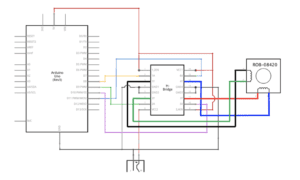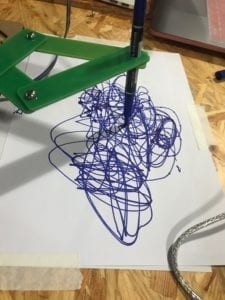STEP 1: Build the Circuit
In this recitation, we are working with a stepper motor. Each of us has to make a circuit that would facilitate the stepper motor to make one revolution. We used the H-Bridge or IC inside the circuit. It was pretty complicated because there is a lot of cable and connections involved. We also used a 12V power supply, so we have to be really meticulous to avoid burning our Arduino.

STEP 2: Control Rotation with a Potentiometer
After successfully making the first circuit, we were told to include a potentiometer and utilize the analog read function. I changed the number of steps from 100 to 200 in order to match the stepper motor. It is important to note that the potentiometer have to be completely separated from the IC circuit. In the Arduino, I also put the map function to change the value so that the computer could read it. The result was that the rotation of the stepper motor would match the rotation of the potentiometer.
STEP 3: Build a Drawing Machine
For the last part, I partnered up with my friend to make a drawing machine. We used 3D printed materials that would make up the arms and body of the machine. It was a really fun and interesting experience to build the machine because it feels like an art and craft activity. We were really satisfied that the machine worked and produced this masterpiece.

QUESTIONS
Q1: I believe the kind of machine that I am interested in making would be something that relates to each individual personally. One example could be an interactive robot painting machine that could sense your heartbeat and your moisture as the base of their paintings. They would make a painting based on your state of mind. And I think that’s very intriguing to see how the machine interprets each person’s condition. The implementation of actuators and sensors is crucial for the machine to be able to provide input data and then process it to make the desired output. This machine perfectly illustrates how I will implement the lessons I learned in this class in the future.
Q2: Based on the text, I am particularly interested in the project Chico MacMurtue/Amorphic Robot Works, The Drumming and Drawing subhuman, made in 2000. The artist had to use motors that could replicate human movement. It is pretty similar to the work that we do in our recitation in many ways; first, it involved hand oriented movement. We made a drawing machine to make drawings that were usually done with human hands. While the artist made a robot that would beat drums. Both actions were normally done with the use of the human hand, but with the use of computer programming those were not necessary.